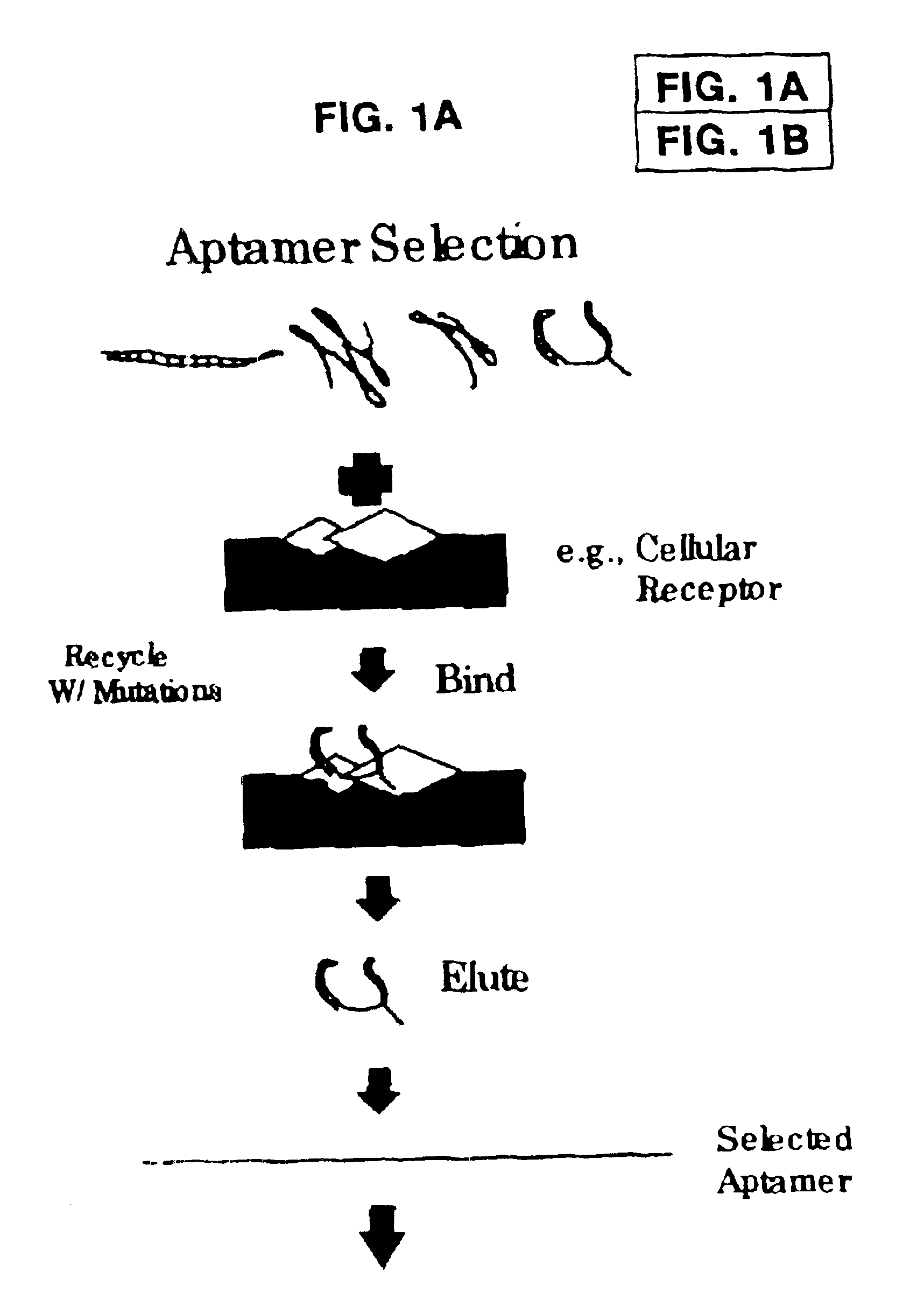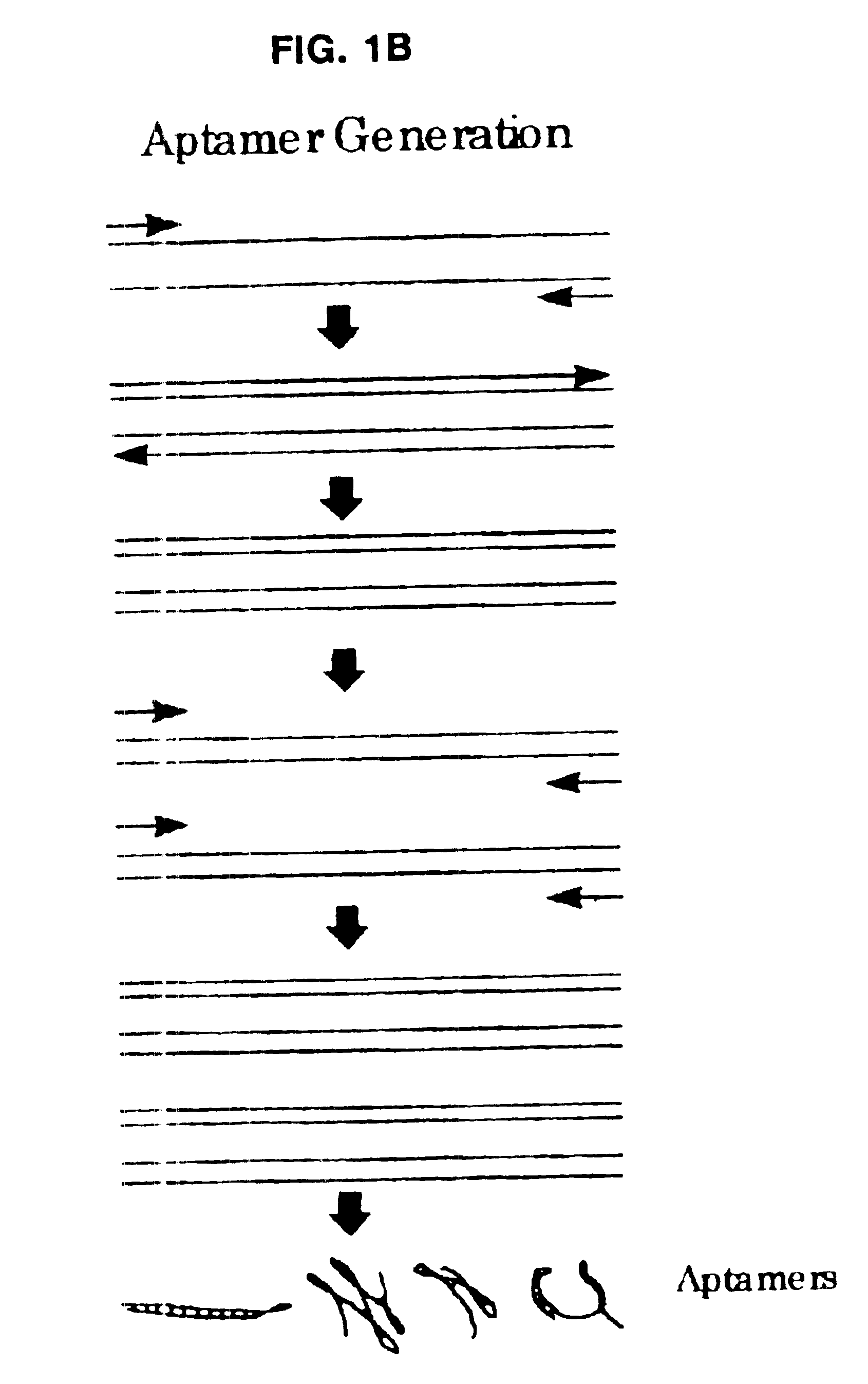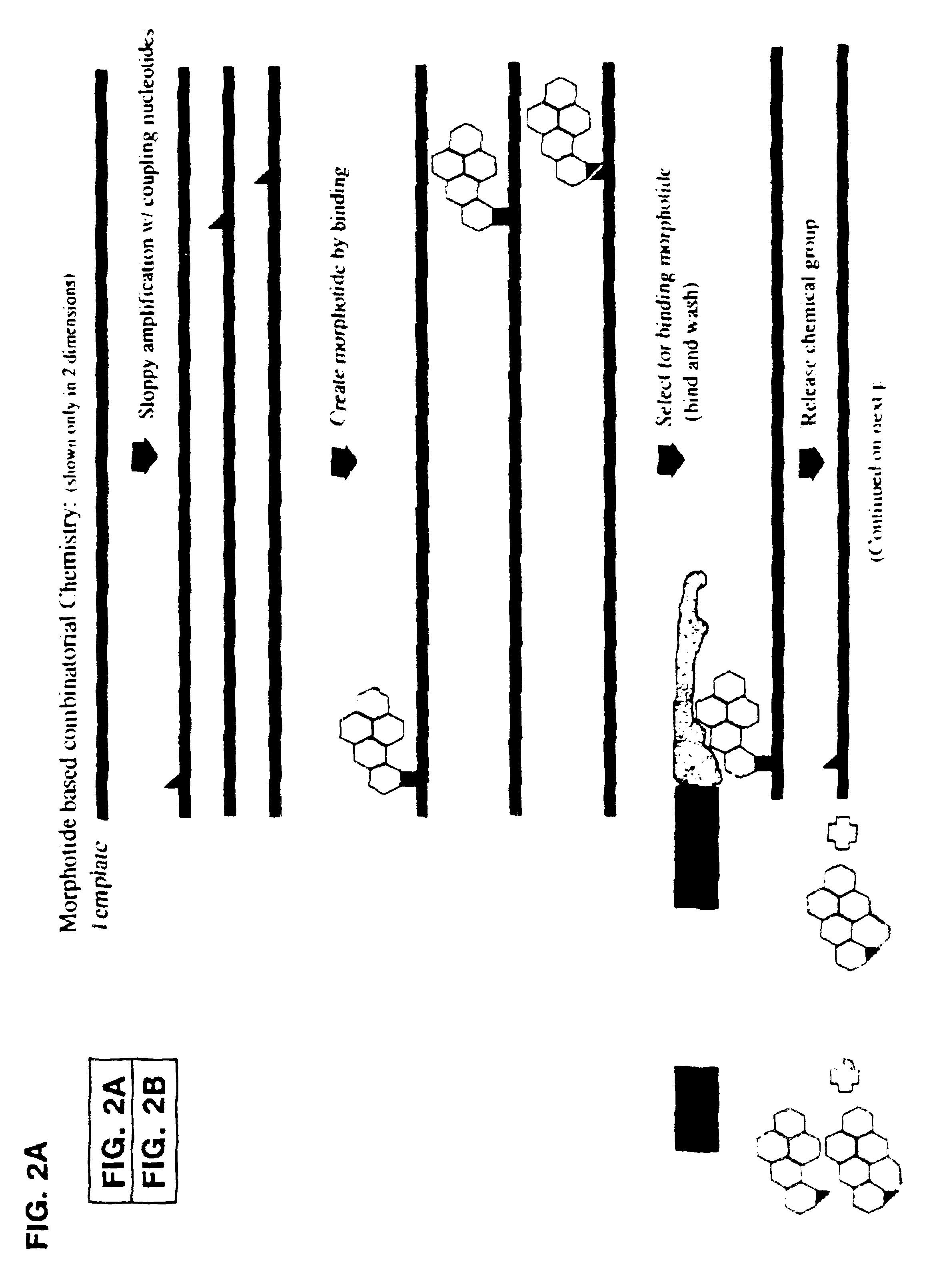Morphatides: novel shape and structure libraries
a library and structure technology, applied in the field of morphatides, can solve the problems of reducing leads to useful products, limiting the repertoire, and natural product libraries can offer structural complexity, so as to facilitate the decoding of lead structure, and effectively “evolve” chemical groups
- Summary
- Abstract
- Description
- Claims
- Application Information
AI Technical Summary
Benefits of technology
Problems solved by technology
Method used
Image
Examples
example 1
Generation and Amplification of Linker Conjugated Scaffolding Molecules
1) Three pools of nucleic acid scaffolding molecules are generated using sequence randomized template nucleic acids generated (using solid state phosphoamidite chemistry followed by PCR amplification) with phenylboronic acid linker reagent conjugated dUTP molecules and dUTP, dATP, dCTP, and dGTP. Conjugated dUTP molecules are generated utilizing standard chemistry and phenylboronic acid linkers complexing reagents. Different ratios of conjugated dUTP molecules to unconjugated dUTP molecules are present in each pool. Pool #1 contains conjugated:unconjugated dUTP present in a 1:10 ratio; pool #2 contains conjugated:unconjugated dUTP present in a 1:1 ratio; and pool #3 contains conjugated:unconjugated dUTP present in a 10:1 ratio. Error prone PCR is performed on each pool.
Generation of Morphatides
2) Five different conjugated amino acids (leucine, aspartic acid, glutamine, phenylalanine and tyrosine) (generated utili...
example 2
Generation and Amplification of Scaffolding Molecules
Generation of Scaffolding Molecules
Four libraries of scaffolding molecules containing a random region (variable cores) and constant flanking regions are constructed. In each case, three of the four bases are incorporated with similar frequencies and one base is represented in a much reduced amount (e.g., {fraction (1 / 10)}th of the other three bases, although this ratio depends upon several factors, including the length of the variable core), hereinafter the “restricted” or “rare” base. The “restricted” base later provides the template for the incorporation of the linker “base” or nucleotide associated with linker molecules (a linker base can be a base analog as well). This approach permits the random modification of the variable cores in a manner that permits the position of the linker bases to be determined. This strategy is termed the 4×(3+1).
In a 4×(3+1) strategy, four pools of ssDNA oligomers with 72 nucleotides are prepared u...
example 3
Generation of Morphatides
The rare DNA bases in the four random pools containing linkers are now individually reacted with the agent molecule threonine via a coupling reaction to generate the morphatides.
Selection of agent molecules to be used can depend on several factors. For example, aliphatic pentynyl groups can provide a site for hydrophobic interaction with a hydrophobic cluster of surface residues on thrombin. Knowledge of essential structures on the target molecule, such as catalytic site may be helpful in considering agent molecules. Of general use are charged groups such as several amino acids (Asp, Glu, and Arg) and hydrophobic moieties such as hydrophobic amino acids (Trp, Tyr, and Phe). However, many similar chemical groups are worthwhile considering. Small peptides are possible too.
PUM
| Property | Measurement | Unit |
|---|---|---|
| concentration | aaaaa | aaaaa |
| pH | aaaaa | aaaaa |
| nucleic acid | aaaaa | aaaaa |
Abstract
Description
Claims
Application Information
 Login to View More
Login to View More - R&D
- Intellectual Property
- Life Sciences
- Materials
- Tech Scout
- Unparalleled Data Quality
- Higher Quality Content
- 60% Fewer Hallucinations
Browse by: Latest US Patents, China's latest patents, Technical Efficacy Thesaurus, Application Domain, Technology Topic, Popular Technical Reports.
© 2025 PatSnap. All rights reserved.Legal|Privacy policy|Modern Slavery Act Transparency Statement|Sitemap|About US| Contact US: help@patsnap.com



